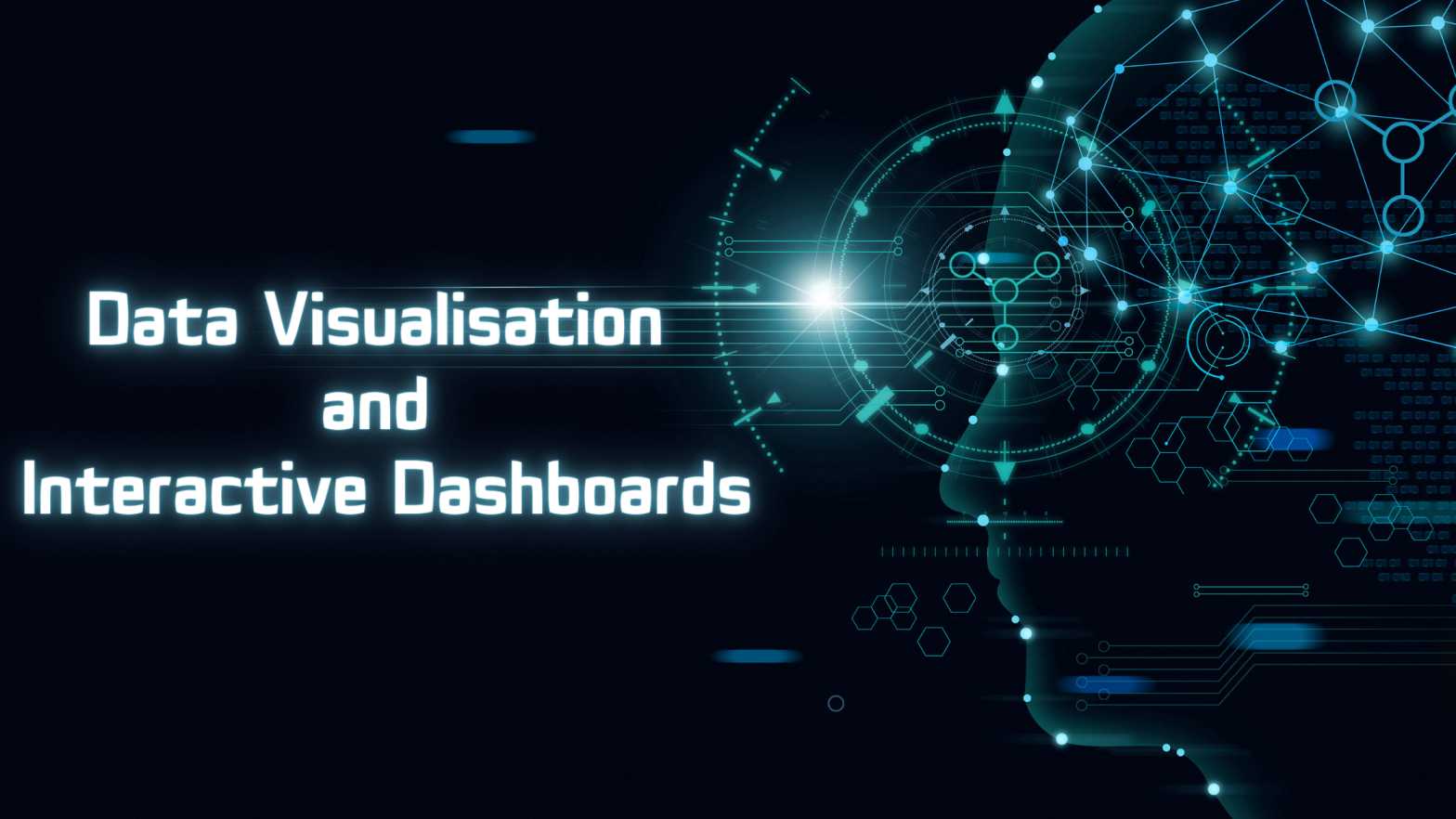Last updated on June 27th, 2024 at 01:42 pm
Understanding complex datasets is challenging. Data visualisation and interactive dashboards help us gain insights, identify patterns, and communicate effectively, transforming data into visual representations. It is a must-have skill to build a career in data science.
This blog will explore the significance of data visualisation and delve into interactive dashboards, understanding their benefits and best practices.
The Power of Data Visualisation
Data visualisation goes beyond presenting data in a visually appealing manner. It enhances data comprehension and enables effective analysis. Visual data representation helps us spot patterns, trends, and outliers faster than we could from raw data alone.
Visualisations simplify complex information and provide a deeper understanding of data relationships. Moreover, they facilitate effective communication of insights, enabling stakeholders to comprehend and act upon them more readily.
Types of Data Visualisations
Data can be visualised in various forms, each serving a specific purpose. Below are the various kinds of data visualisations:
- Charts and graphs, such as bar, line, and pie charts, offer intuitive comparisons and depict proportions.
- Maps and geospatial visualisations provide a spatial context, allowing us to uncover regional trends or patterns.
- Infographics and data-driven storytelling engage audiences by presenting information in a visually compelling narrative.
- Network diagrams and flowcharts illustrate connections and processes, helping understand complex systems.
- Heatmaps and tree maps offer a hierarchical view of data distribution, highlighting areas of concentration or importance.
Interactive visualisations and animations take data exploration to another level by enabling users to interact with the visualisations, manipulate parameters, and observe real-time changes.
Design Principles for Effective Data Visualisation
Creating compelling data visualisations requires adhering to design principles that maximise understanding and impact. Choosing the appropriate visualisation for the data is crucial; it should align with the presented data’s purpose and nature.
Ensuring clarity and simplicity in the design helps avoid confusion and facilitates understanding. Properly labelling and annotating visual elements provide context and make it easier for viewers to interpret the information.
Effective colour and contrast can highlight important insights or create visual cues that guide attention. Incorporating interactivity in visualisations encourages engagement and enables users to explore the data further, gaining deeper insights.
Interactive Dashboards
Interactive dashboards provide dynamic, customisable interfaces for data exploration. These dashboards offer an all-encompassing view of the data, consolidating multiple visualisations into a single interface. They empower users to interact with the data, apply filters, and extract specific insights on demand.
With interactive dashboards, stakeholders can monitor key metrics in real-time, track progress, and identify trends or issues that require attention. The interactive nature of dashboards enables users to drill down into the data, providing deeper layers of information and facilitating data-driven decision-making.
Tools and Technologies for Data Visualisation and Interactive Dashboards
Popular data visualisation and interactive dashboard tools offer various visualisation options, allowing users to create customised dashboards tailored to their needs.
- Tableau: Widely used for data visualisation and business intelligence, it offers an intuitive platform for creating interactive visualisations, dashboards, and reports. Users can connect to various data sources and build visualisations without coding using Tableau. Tableau enables data exploration, insights, and effective communication through charts, graphs, and maps.
- Power BI: Power BI is a business analytics tool developed by Microsoft for data visualisation and interactive dashboards. Initially released as PowerPivot in 2010, it was an Excel add-in for importing and analysing large datasets. In 2013, Microsoft introduced “Power BI for Office 365,” expanding PowerPivot’s capabilities with components like Power Query, Power View, and Power Map.
Open-source alternatives like Plotly, Matplotlib, and R Shiny provide flexibility and customisation options.
Best Practices for Creating Interactive Dashboards
Following best practices throughout the design and development process is essential to create effective interactive dashboards. Clearly defining the objectives and identifying the target audience helps ensure the dashboard meets their needs. Selecting appropriate data sources ensures the dashboard is built on reliable and relevant information.
Organising and structuring the dashboard logically helps users navigate efficiently. Interactive elements and filters allow users to customise the view and extract relevant insights. Ensuring responsiveness and compatibility across devices enables seamless access and exploration.
Real-world Examples
Real-life examples demonstrate the power of data visualisation and interactive dashboards in driving data-centric initiatives. For instance, Company X used an interactive dashboard to monitor sales performance across different regions. Executives were able to identify underperforming areas and implement targeted strategies to improve sales.
Similarly, Government Agency Y employed data visualisations to track public health indicators. The interactive dashboards helped them identify emerging trends, allocate resources effectively, and make proactive decisions to mitigate the issues about the risks. These examples highlight the tangible benefits of visualising data and leveraging interactive dashboards in diverse domains.
Conclusion
Data visualisation helps assess problems and develop a feasible solution, irrespective of the industry. Dashboards are used to analyse metrics of any substantial matter. If you’re looking for a career in data science or business analytics , mastering data visualisation is key to your growth in this domain.
Imartius’s Postgraduate Programme in Data Science and Analytics is meticulously curated and suitable for both freshers and experienced individuals. This holistic data science course covers everything from statistics to programming and machine learning.

